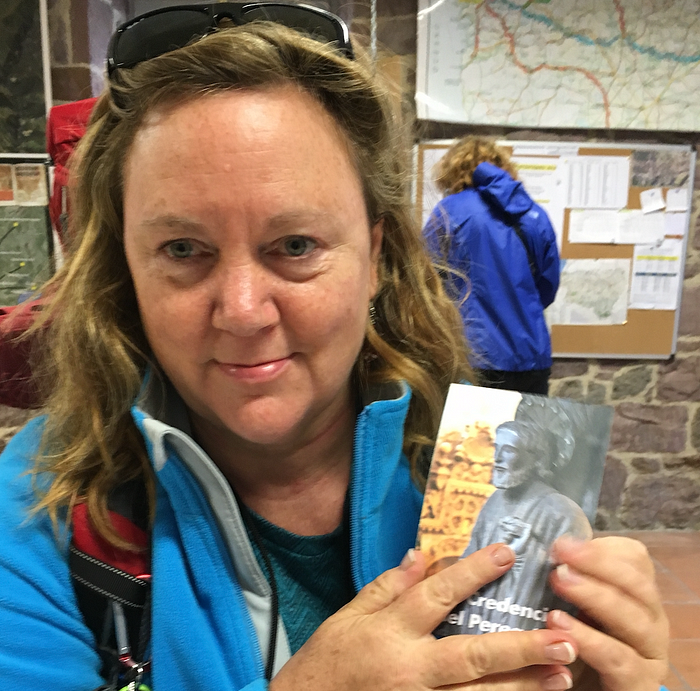A Journey of Healing: Retiring Early to Walk the Camino
Written on
Chapter 1: The Turning Point
"I’m off to walk the Camino de Santiago this October for a month," I shared with Jay, my husband. He looked at me with a mix of amusement and understanding. Given my history of living in Cambodia and my travels, he was accustomed to my adventurous spirit. However, this journey felt particularly significant, especially after the loss of my parents, which left me in a fragile state. It was this deep sense of sorrow that prompted my decision to retire early.
In 2011, I lost my mother, and just six months later, my father followed. I rushed to Yakima, Washington, to be by my mother’s side during her final days. I remember those October nights, my dog Sidney curled up beside me in the car while I sat by her bedside. On the third night, as I whispered my love to her, she passed peacefully, leaving me devastated and alone in my grief.
My stepdad, unable to cope with the loss of another spouse, struggled himself. I was there to support him, but it was a taxing time. We held a large memorial service, and I was juggling my full-time teaching job with the emotional toll of planning. Just as I thought I could breathe again, my father’s health declined rapidly. He lived nearby, which made it easier to care for him, but it was still exhausting.
After introducing him to online dating in hopes of alleviating his loneliness, he ended up entangled with a woman more interested in his assets than companionship. I found myself having to protect him from her manipulations while managing the emotional turmoil of his decline.
By the time I decided to retire in 2015, I felt utterly spent—not just from teaching but from the weight of my losses. The classroom door often felt like a confining space where I could not escape my sadness. The thought of facing another year of school while grappling with my grief became unbearable.
I calculated my finances, realizing I could retire early, albeit with limited income. However, I reassured myself that I would continue to work part-time, as I always had. My goal was to walk away from my grief, and I found myself drawn to the Camino de Santiago, a renowned long-distance trail in Spain.
Jay supported my decision wholeheartedly, knowing how deeply the loss had affected me. He promised to manage our home and animals while I embarked on this journey. As I boarded the plane to Europe for the first time, my only concerns were practical—keeping my money belt secure and ensuring my feet were ready for the trek ahead.
During the 41 days of walking, covering approximately 500 miles, I encountered challenges but also formed meaningful connections with fellow travelers. Most importantly, I found the healing I was seeking. The beauty of Spain, with its sun-drenched landscapes and rich culture, nourished my spirit.
Section 1.1: Embracing Self-Care
As a caregiver throughout my life—whether to my family, students, or friends—I often neglected my own needs. On the Camino, I learned to prioritize myself. I asked myself: Am I hungry? Am I thirsty? This journey allowed me to step back from my responsibilities and focus on my well-being.
Subsection 1.1.1: The Transformation

Section 1.2: Life After the Camino
Arriving in Santiago de Compostela, I felt a profound lightness—physically, mentally, and spiritually. I had followed the Camino’s yellow arrows, gaining wisdom and health along the way. Since then, I have returned to walk the Camino multiple times and have found various ways to stay productive and engaged.
Chapter 2: Finding New Purpose
In the video "POST CAMINO DEPRESSION? Everything That NO ONE Tells You," the speaker shares insights into the emotional challenges many face after completing the Camino de Santiago and offers advice on navigating this transition.
The second video, "How to Cope After Your Camino de Santiago Ends," provides strategies for maintaining the sense of peace and fulfillment gained from the pilgrimage, even after returning home.
After retiring, I engaged in substitute teaching for several years. However, the onset of COVID-19 changed the educational landscape, limiting opportunities in schools. I’ve discovered that maintaining a routine—like getting up, enjoying coffee, and pursuing projects—keeps me fulfilled and content.
As I advise others considering retirement, remember that your job should not define your life. Explore interests outside work, walk in nature, and cultivate hobbies that bring you joy.
A major lesson from my Camino experience is learning to be comfortable in solitude. Leaving the social structures of work can feel isolating, yet the journey taught me the value of introspection and mindfulness.
So, if you’re considering a walk on the Camino de Santiago, I encourage you to take the leap. It changed my life for the better, and even now, I utilize walking apps to keep the spirit of the Camino alive in my daily life. Embrace activity, breathe deeply, and appreciate the beauty around you.
Thank you for joining me on this journey. For more stories about the Camino, feel free to explore further!